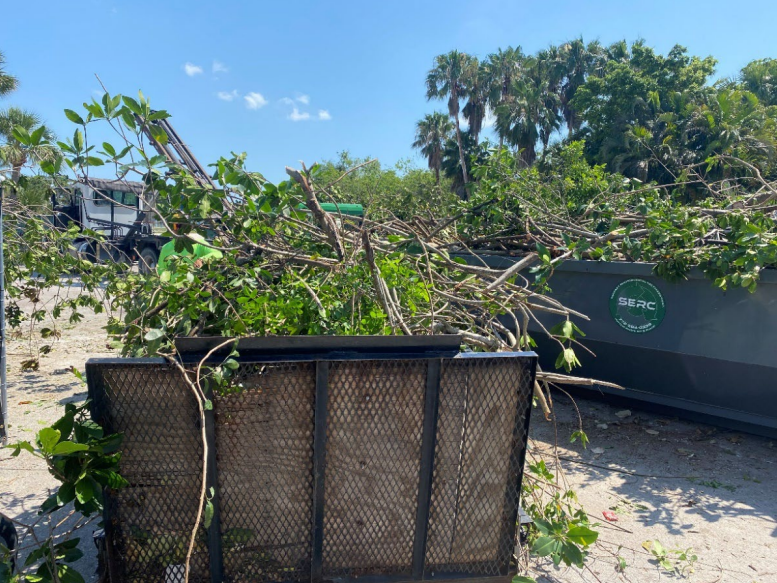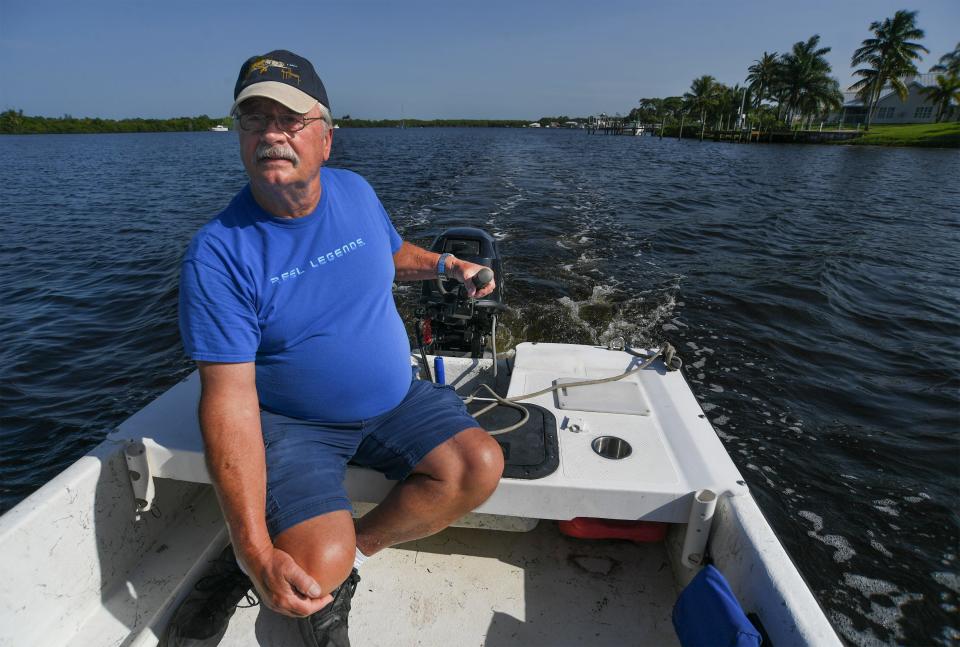Case of the Mangled Mangroves in PSL shows need for greater environmental responsibility
If it weren't so sad, it would be funny.
As TCPalm reporter Katie Delk wrote a few days ago, the owners of Sandpiper Bay Resort in Port St. Lucie told state investigators nearly 1,000 mangroves along their property's shoreline were wiped out by a tornado. Apparently, this tornado was news to the National Weather Service, which pays pretty close attention to that sort of thing.
Although there were no reports of a tornado hitting the area, the damage to the coastal vegetation was apparent.
The once 24-foot-tall mangrove trees, which lined a shoreline nearly 10 football fields long, had grown halfway to the fence line near a pool, hotel rooms and volleyball court on the property, which used to be home to Club Med's only resort in the United States.
Then one day a few weeks ago, Jim Dirks, a Stuart shop owner and avid fisherman, discovered the marine vegetation had been cut down to the nubs.
After Dirks reported what he saw to the Florida Department of Environmental Protection, the state agency's investigators found piles of healthy red and black mangroves in Dumpsters on the property, with cut pieces measuring 15 to 26 feet long.
Representatives for the resort's new owners, Altitude International Holdings Inc., reportedly told investigators they didn't know Florida law protects mangroves or that they needed a permit to cut them down.
To quickly recap and summarize Altitude's apparent responses to investigators: A) The damage was caused by a nonexistent weather event. B) Even answer A is a complete falsehood and we actually did what you think we did, we didn't know what we were doing was wrong.
Sheesh. In the pantheon of lame excuses, Altitude's ranks somewhere in line with "the dog ate my homework."

The DEP is still investigating the case and Altitude could eventually be slapped with fines exceeding $236,000, based on provisions of state law that say people can face penalties up to $250 for each illegally "altered" mangrove tree and up to $100 for each illegally "trimmed" tree.
Meanwhile, Dirks said he's disappointed there hasn't been more of an uproar about what I'm calling the Case of the Mangled Mangroves.
"What surprised me most was the crickets I heard from local politicians," Dirks said. "It kind of bothered me that we haven't heard anything from the city. ... Just to come out and say, 'we don't like this' would have been an important thing, I think."
I checked with Sarah Prohaska, the city's communications director, who could recall no discussions about the matter at City Council meetings since the mangrove destruction was brought to light.

When I asked for U.S. Rep. Brian Mast's take on the situation, a spokeswoman for the Fort Pierce Republican sent me the following statement from the congressman:
“We have one of the most biodiverse estuaries in North America and we all have a role to play in protecting it. What happened to the mangroves isn’t just unfortunate, it’s unacceptable. Mangroves are a home to many species in our diverse ecosystem and depend on this type of environment to survive. More and more people are choosing to call Florida home, and it’s clear that many need to be educated about our environment. We must do better.”
Mast is right about that. Mangroves aren't just weeds that can be hacked away willy-nilly. Their intricate root structures provide shelter and protection from predators for wildlife living along the shoreline. Those roots also help hold the shoreline in place, lessening the effects of erosion.
And ― this one should concern us all ― mangroves provide an important line of defense when severe storms strike the area. Without mangroves to slow wind speeds and diffuse waves, the damage to private property from storms moving onshore can be much more severe.

The owners of Altitude aren't from around here, but that doesn't mean we should give them a pass. There's more to owning waterfront property than having a fat checking account.
It's necessary for landowners to have a good understanding not only of their rights, but also their responsibilities.
Altitude reportedly paid $55 million to buy the resort, so clearly the company has the resources to research applicable land regulations.
No one owns the Atlantic Ocean, the Indian River Lagoon or the St. Lucie River. Those waterways are all assets people living along the Treasure Coast share.
Maybe state officials could improve their outreach efforts to help waterfront property owners better understand environmental regulations that affect them. Maybe some informational brochures, a video or other communications should be distributed to people purchasing land abutting public waterways.
At the end of the day, though, it's up to the property owners to know what they're getting themselves into.
If Altitude wants to be a good neighbor, I would encourage the company to come forward not only with a public apology, but also with a plan to in some way compensate for the environmental damage that occurred on the property.
I mean, beyond whatever fines and corrective actions the DEP requires. I'm thinking maybe a generous contribution to a local environmental group, or maybe a few days' free use of the resort for people who devote their time to waterway protection.
Club Med was an iconic brand in Port St. Lucie. If Sandpiper Bay aspires to have comparable stature in the community, Altitude needs an attitude adjustment.
And don't try to twister the facts by blaming fictitious tornadoes.
NOTE: As several readers pointed out, I made a mistake in last weekend's column when I suggested a few high earners in Jupiter Island could skew Martin County's median income upward. Those high earners could affect the county's average income, but not the median. However, I remain convinced using the median income as the template for what constitutes "affordable" housing doesn't help many people who live below the median income.
This column reflects the opinion of Blake Fontenay. Contact him via email at bfontenay@gannett.com or at 772-232-5424.
This article originally appeared on Treasure Coast Newspapers: Sandpiper Bay's mangled mangroves are wakeup call for Treasure Coast

